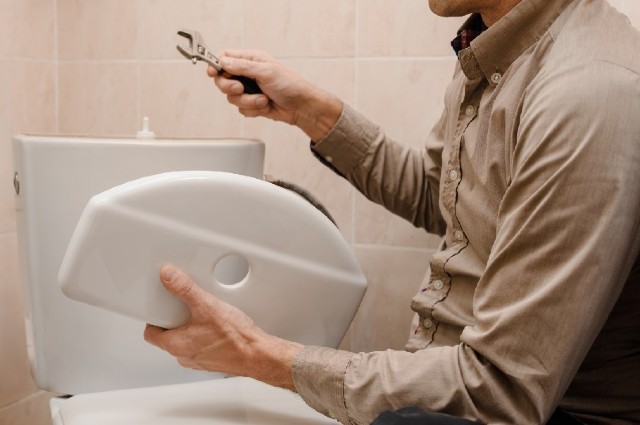Toilet Constantly Running? Here’s How to Stop a Running Toilet in Seconds

There’s nothing quite as frustrating at home as the constant drip or whoosh of a toilet that just won’t stop running. Beyond being a bit of an irritation, it can waste a surprising amount of water – and that means your bills take a hit, too. Knowing how to fix a running toilet isn’t just handy; it’s good for your wallet and better for the planet.
We’ll walk you through the usual suspects behind this pesky problem – things like a dodgy flapper valve or a float that’s gone out of whack, and share simple tips to help you spot and sort the issue yourself.
Table of Contents
How to Fix a Running Toilet
A toilet that is constantly running isn’t just a background annoyance – it’s leaking water by the litre and quietly ramping up your water bill. The good news? In most cases, it’s something you can sort yourself with a few simple checks.
1. Lift the lid and take a look
Pop the lid off the cistern and have a proper look inside. Hear that water still flowing? That’s a sign that something isn’t sealing right or the water level’s gone a bit rogue. Give it a flush or two and watch what happens – often the issue shows itself straight away.
2. Check the flapper
The flapper’s that soft rubber bit at the bottom of the cistern. Its job is to shut the water off after a flush. If it’s looking warped or doesn’t sit properly, water sneaks through and keeps things running. While you’re in there, have a look at the chain that links the flush handle to the flapper. Too tight or too loose, and it won’t seal right. Adjust it so there’s just a bit of give – enough for the flapper to fall back into place nice and snug.
3. See where the water’s sitting
If the water level’s creeping above the line inside the cistern, it’ll spill into the overflow tube and keep the toilet filling. You’ll usually spot a mark that shows the ideal level. If the water’s gone past it, you’ll want to tweak the float or the fill valve to bring it back down.
4. Tweak the float
The float is what tells your loo when to stop refilling. Whether it’s an old-school ball float or one of the newer cup types, it works the same way. If it’s set too high, water just keeps pouring in. Most floats can be adjusted by turning a little screw, or with the older ones, you can gently bend the arm down. Aim for the water to stop filling about an inch below the overflow pipe.
5. Give it a test run
Once you’ve made your tweaks, flush the toilet a couple of times while the lid’s still off. The flapper should seal smoothly, and the float should shut things off at just the right level. If the sound of running water is gone, job done. Easy as that.
The Hidden Cost of a Constantly Running Toilet
A constantly running toilet may appear to be a bothersome background noise, but it is quietly increasing your water bill and squandering a lot of water in the process. What many people don’t know is that even a minor, consistent leak can waste lots of litres every day, which quickly accumulates.
Saving money isn’t the only benefit of getting things right. It’s also one of the most basic methods to reduce water usage at home and support water conservation efforts. By resolving the issue as soon as possible, you are helping the environment while also avoiding additional costs.
Call a Plumber to Stop the Toilet From Running
t’s probably time to hire a specialist if you’ve done everything and your toilet is still running. Getting a professional plumber involved is the best course of action if you don’t know how your toilet works or don’t feel comfortable messing about with your plumbing.
A plumber is able to properly pinpoint the issue and address it before it worsens. Knowing when to bring in an expert helps you resolve problems promptly and prevents more serious problems later.
Final Words
We’ve covered the inner workings of a running toilet, but just like unblocking a toilet, not every problem can be solved with a spanner and some determination. If you’ve given it your best shot and the issue won’t budge, or if the plumbing bits start to look like a mystery, it’s probably time to get a professional on the case.
Some problems are trickier than they seem, and a qualified plumber has the experience to spot what’s really going on and fix it before it turns into something much bigger. Knowing when to hand things over can save you time, stress, and a lot of water “down the drain”.
Toilet Constantly Running? Here’s How to Stop a Running Toilet in Seconds
Need help? Hire the London Property Service experts today by giving us a call on 020 3078 5920.




